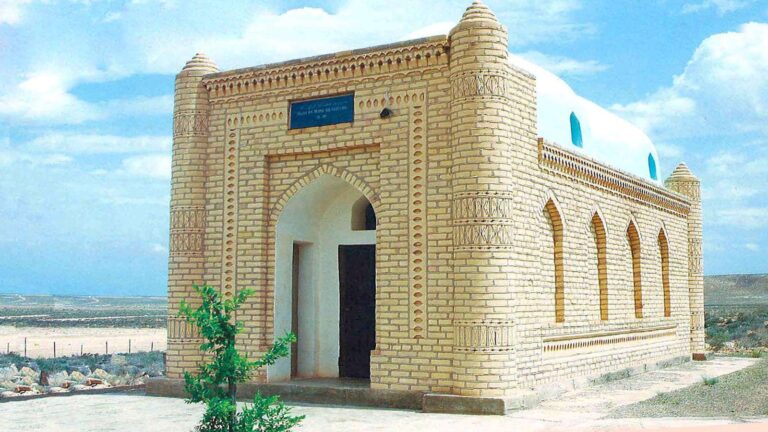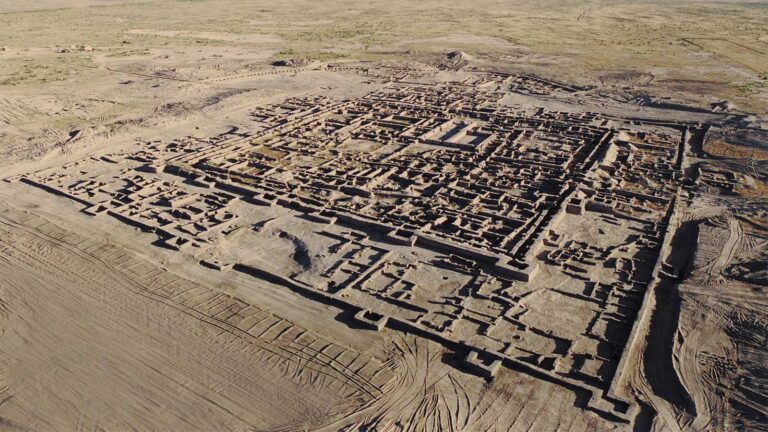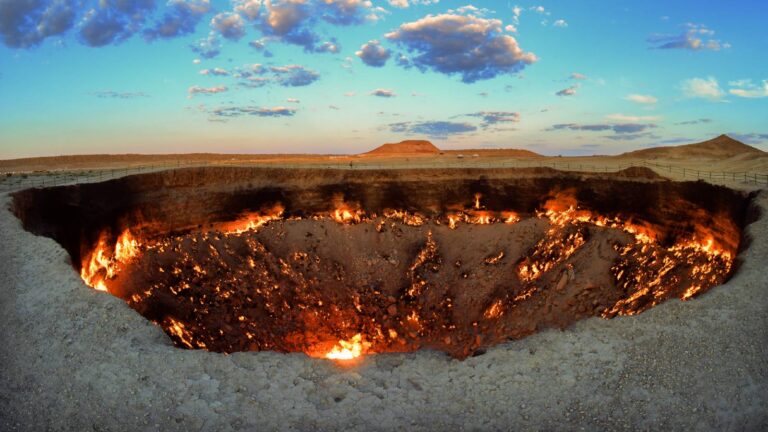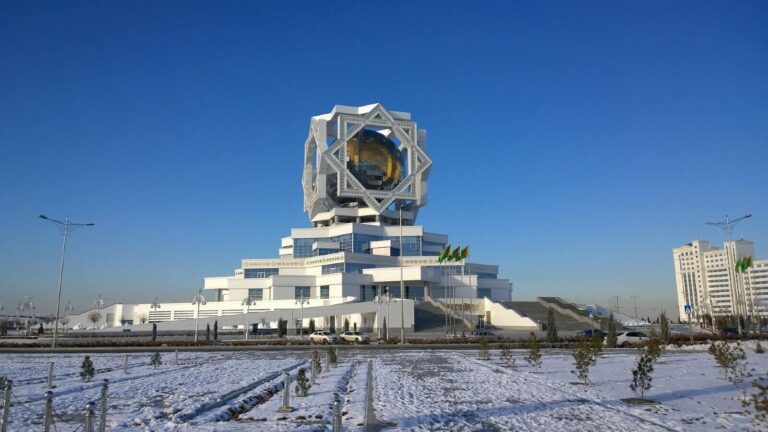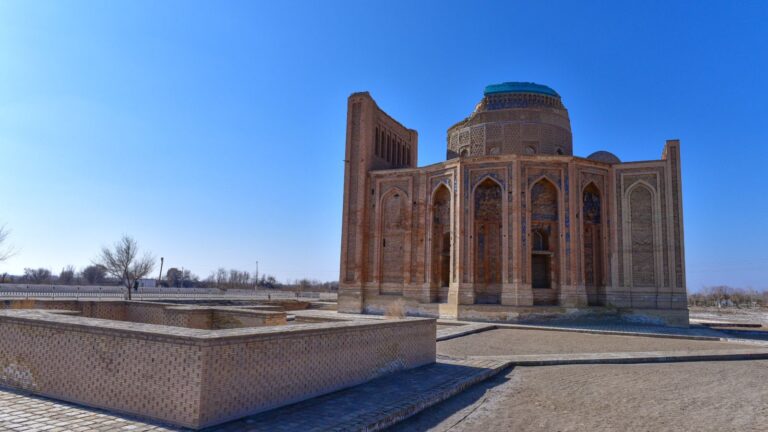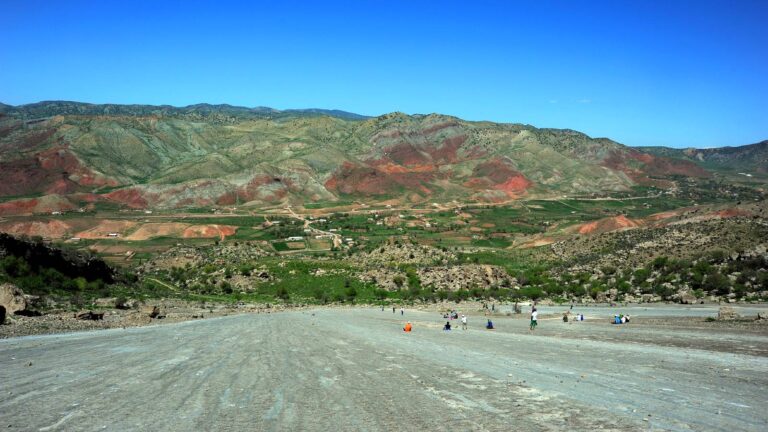By Plane
The region can be reached by air, rail, sea or motor transport.
The Caspian coast of Turkmenistan is an ecologically clean area characterized by a unique, breathtaking mild climate and rich natural resources.
In the Balkan velayat on the eastern coast of the Caspian Sea, the Avaza National Tourist Zone has been created with 35 modern hotels, resorts and cottages, the Avaza resort, as well as a number of parks, amusement parks and water parks.
The Mollagara resort was opened in 1922 as a health center for 300 people, and in 1999 two one-storey VIP buildings have opened their doors. In 2012 after reconstruction the resort could accommodate 815 people and 170 families. The resort is known for its healing salts and mineral water.
Dehistan
On the absolutely flat, waterless and clayey plain of the Balkan velayat, formerly known as the Misrian Plain, rise the mysterious ruins of ancient Dehistan, the city, probably the most remote and isolated. It was once a prosperous medieval city on the caravan route between Khorezm and Persian Hyrcania. Dehistan was located in the center of the Misrian oasis, and is also known as Misrian (Messorian). (The name Dehistan originated from dakhs – the tribe which used to inhabit the place). Dehistan emerged at the turn of the VIII-IX centuries, the city experienced a period of rapid prosperity during the Khorezmshahs reign. The total city area was about 200 hectares, and it was protected by a double ring of walls.
After the Mongol invasion, life in the city continued in the 13th-14th centuries, and in the 15th century, life in Dehistan-Misrian disappeared completely. Numerous ruins of various structures testify to its former greatness today.
The site has preserved the famous Shir-Kabir mausoleum, two minarets 25 meters high, the portal of the cathedral mosque, the remains of the muddy clay city walls, the ruins of caravanserais and mausoleums at the Mashad necropolis.
Several caravanserais, located around the settlement behind the fortress wall, mark the location of several city gates, indicating the direction of the caravan routes from the city: the southern gate led to Persia and Turkey; eastern – to Bukhara, Samarkand, Merv; the northern ones – to Russia and Europe.
Shir-kabir mausoleum (IX-X centuries)
6 km from Dehistan there is an ancient burial place Mashad, a Muslim necropolis with the famous Ali ibn Sukkari or Shir – Kabir mausoleum located in the center. The buildings of the Shir-Kabir mausoleum-mosque belong to the buildings of the prestige Serakh architectural school.
Tasharvat caravanserai
The picturesque ruins of the Tasharvat caravanserai are located in 38 km from the Balkanabat town, near the Tasharvat spring, on one of the ancient caravan routes, a numerous branches of the Great Silk Road.
Parau-bibi Mosque
The small white Parau-Bibi mosque is one of the most honored pilgrim places of Turkmenistan. It stands all by itself on one of the Kopet Dagh rocks. According to a legend, Parau-bibi was a beautiful girl who lived in a village. One day the people decided to buy-off their safety and hand her to the oncoming enemies. She managed to escape. Parau-bibi hid in the mountains and started praying. Eventually the rock opened and hid her forever. This place now is marked by a mosque.
Many new song, music, folklore and dance groups have emerged on the territory of the Balkan velayat, such as “Shelpeler”, “Kenar”, “Yashlyk”, “Gunesh” and others.
“Kushtdepdi” is a bright and unique example of national art, a reflection of the harmonious combination of the historical and cultural traditions of the people, their spiritual experience and the creative potential of the modern era. “Kushtdepdi” at the XII session of the Intergovernmental Committee for the Safeguarding of the Intangible Cultural Heritage was inscribed in the Representative List of the Intangible Cultural Heritage of UNESCO.
- New Year Celebration- January 1
- International Women’s Day – March 8
- National Spring Festival – March 21-22
- State Flag and Constitution Day – May 18
- Independence Day – September 27
- International Day of Neutrality – December 12
- Eid al-Adha (Kurban-Bairam) – Date is determined according to the lunar calendar and is annually approved by decree of the President of Turkmenistan
- Victory Day – 9 May
- Ashgabat City Day – May 25
- Science Day – June 12
- Day of Knowledge and Student Youth – September 1
- Day of Workers of Culture and Art and poetry of Makhtumkuli – June 27
The following holidays and festivals are celebrated and held annually:
Day of Akhal-Teke horses and Turkmen Alabay, the Carpet Festival, Melon Festival, Harvest festival, Turkmen carpet Festival.
The Balkan velayat covers an area of 139 270 thousand km2, which is is 28.4% of the total Turkmenistan territory.
Velayat is located in the very west of Turkmenistan. The climate is sharply continental and drifts from temperate to subtropical, arid.
The Balkan velayat plays a special role in Turkmenistan’s economic strategy. Diverse natural resources, geopolitical location at the intersection of transport corridors, favorable weather conditions for the resort tourism development, the availability of industrial infrastructure, all this creates opportunities for the province rapid development.
The fuel and energy sector of the industrial sector makes up the bulk of the Balkan velayat economy, dominated by such industries as the oil refining, gas industry, oil and the electric power industries.
The Balkan velayat is a developed region in the agricultural sector, among other sectors. The agriculture is currently one of the fastest growing sectors of the economy and one of the most promising areas for investment in the Balkan velayat. The unique natural climate makes it possible to create in the region one of the largest food bases for the production of subtropical products and other agricultural products. Pastures on wide plains and in the mountains contribute to the rapid pastoralism development.

